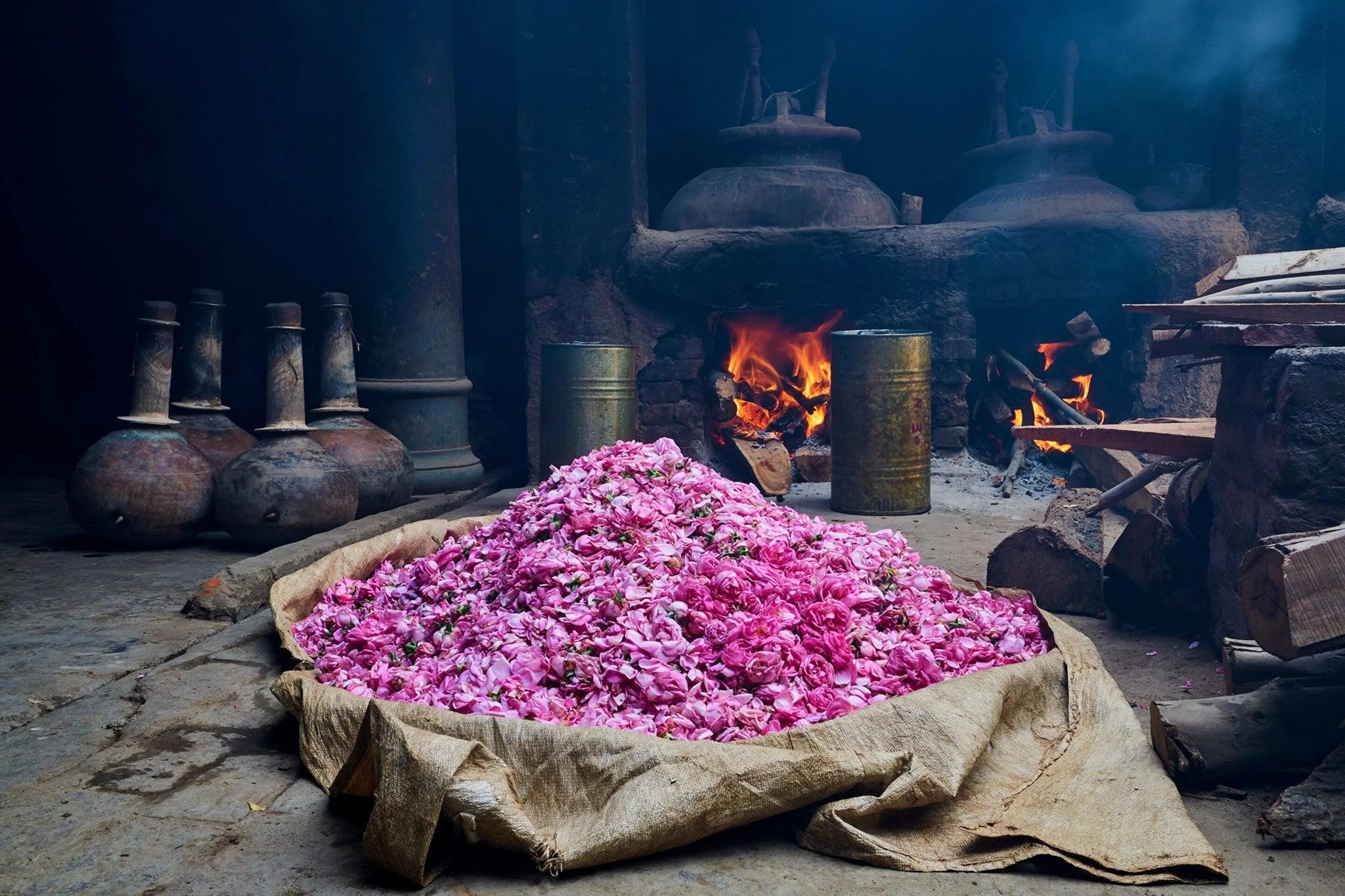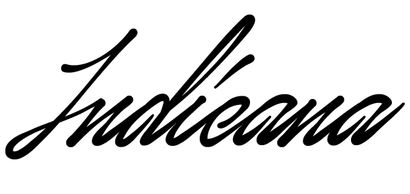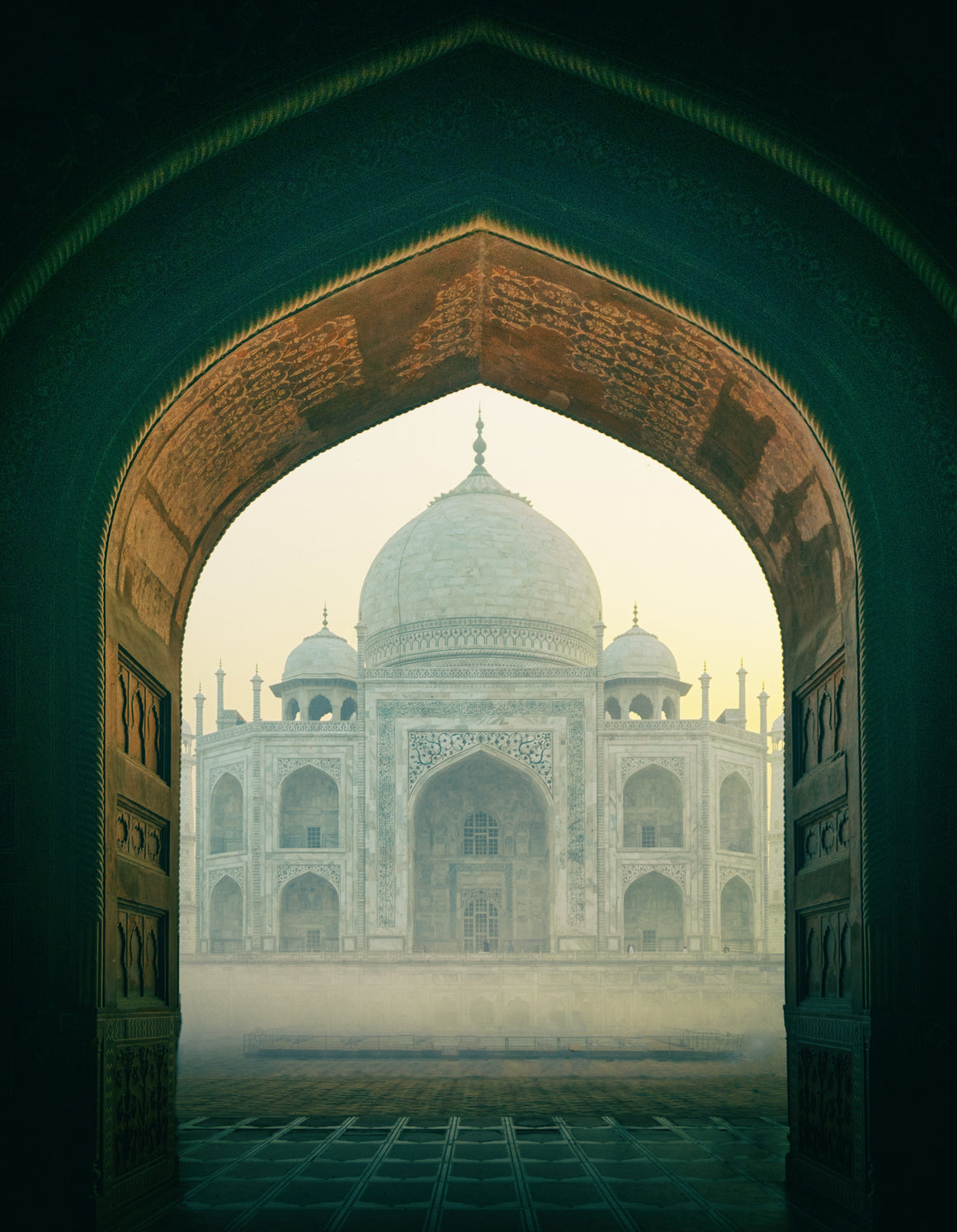
Attar
Attar - the Original and Ancient Art of Perfumery
What is an Attar?
The word ‘Attar’ or ‘Ittar’ comes from an ancient Persian word ‘attar’, ‘otto’ or ‘ottar’, that means perfume, fragrance or scent.

(Picture Above : Attar by Indicana Oud)
How is an Attar Made?
Attar are prepared products of essence of flowers, herbs, spices and other natural materials over the base oil by traditional hydro-distillation method with deg and bhapka. It is being made and used over centuries in India especially at Kannauj.

(Picture Above: Diagrammatic representation of Deg-Bhapka Distillation method)
History of Attar
Attar is quite ancient in India; it’s more than 5,000 years old. We find mentions of fragrance and perfume in the olden Indian epics and Granths.

(Picture Above : Bhapka (collector) containing essential oils after distillation process kept for few days to mature)
The earliest record of perfume-making in India can be found in the ‘Bri- hat Samhita’, an encyclopaedia authored by the 6th century philosopher Varahamihi- ra – who lived in the north Indian city of Ujjain.
The kings would begin their day with fragrance. According to ‘Agni Purana’, they would take baths with over 150 varieties of fragrances. A large number of men and women were engaged in preparing fragrances amongst whom the woman numbered the most. These women were called Gandhkarika or Gandhhadika. These fragrances were known as Itra.

(Picture Above: Outside of a Distillation Unit in Kannauj - India)
Archaeological evidence shows the earliest inhabitants of the Indian subcontinent held plants in great reverence. With the passage of time, scented oils were extracted by pressing, pulverizing or distilling aromatics vegetable and animal produce. Such processes led to the development of the art of alchemy, the earliest indications of which are available from the perfume jars and terracotta containers found in excavation of the Indus valley civilization.

(Picture Above: 4500 year old perfume bottle discovered in Lothal, Gujarat - India. It belonged to the ancient Indus Valley Civilization of India)
This art of perfumery has survived for centuries and speaks volume for the Indian perfumes. Archaeological excavations of Indus valley civilization (Now Northwest India, Pakistan and Afghanistan) have revealed round copper stills are called “degs‟. Following the seasons of the flowers, traditional attar-makers, with their degs, travelled all over India to make their fresh attars on the spot. Even today, few traditional “ittar- makers'' travel with their degs during the harvesting period. Their equipment has changed little over a period of thousands of years!
There are many sources which cite that use of attar oils and fragrances added a nice whiff to life during the Mughal times in India.

(Picture Above: Surrounded by the copper stills and pots of the trade, freshly picked roses are prepared to be made into essential oil)
Most of the Mughal emperors and their queens were fond of attar fragrances and this led to the discovery and development of attars in India.
Court historian Abu’l-Fazl ibn Mubarak chronicled Mughal emperor Akbar’s regular usage of attar and incense sticks in the Ain-e-Akbari (Constitution of Akbar) – a 16th-century detailed document.
According to historians, the popular Mughal emperor Akbar had a whole department of perfumery so that he and his successors could keep their bodies (and minds) well scented in a region where the hot climate could be countered effectively.
Origins of Attar?
There are several stories about the origin of attar, including one involving Mughal emperor Jahangir, who is credited as the first patron of the industry because his wife, empress Noor Jahan was a connoisseur of itra and used to bathe in water perfumed with rose petals. Soon people began experimenting with natural scents, with the encouragement of Jahangir, leading to a culture of attar-making that continues to this day.

(Picture Above: A worker setting up the Deg Bhapka for distillation of essential oil)
According to some sources, the process of development of attar from roses was discovered by the Mughal queen Noorjahan.
The ruler of Awadh, Ghazi-ud-Din Haidar Shah used to prepare fountains of Attar around his bedroom. These fountains would create a very pleasant fragrant and romantic atmosphere by functioning continuously.
Jasmine Ittar was the favourite perfume of the Nizams of the Hyderabad state. The fondness for itra during Mughal periods reached its acme; the Mughal had settled the Gandhies (experts in making itras) sanctioned them lands and let them make the different varieties of itras. Even to this day, rose cultivation on a massive scale is going on in the Malwa borders of Rajasthan from where different species of beauteous roses are exported to the foreign countries and within the union territories.
Kannauj; The Grasse of East!
The history of attars is very much associated with the history of Kannauj, a small town in Uttar Pradesh in India, 200km from New Delhi, well known in ancient time as “Harsh Vardhan City” today it prides itself as the “Attar City” or the perfume city of India. This town connects to the legacy of Itra from ancient time to till date through Mughal period and Awadh Riyasa.

(Picture Above: Kannauj Railway Station)
Kannauj perfume has a long historical background and Kannauj had perfume trading for thousands of years. Due to the key role of perfume production in Kannauj, the city is known as “the perfume capital of India” and “Kannauj is to India what Grasse is to France”. An expert in the region says: “Kannauj has been the perfumery town of the country for thousands of years”.
Legend has it that the forest dwelling ascetics used certain fragrant jungle herbs and roots in their bonfires during the winters. The shepherds who grazed their sheep in that region found die perfume lingering in the burnt wood, long after the ascetics left the place. Word spread about this incident and some enterprising people searched and found fragrant herbs and roots. Then the experiments on ittar began and the first ittar were finally made in Kannauj
Preserving an Ancient Craft
Despite the passage of time, the art of attar-making continues to thrive in Kannauj, albeit to a lesser degree, thanks to the dedication and passion of its artisans.

(Picture Above: Itr manufacturing from natural ingredients like saffron in Kannauj)
With each generation passing down the knowledge and techniques of their forebears, the city remains a beacon of tradition and craftsmanship in an ever-changing world.
Today, visitors to Kannauj can witness firsthand the beauty of attar-making, with workshops and distilleries offering immersive experiences that showcase the artistry and skill behind these exquisite fragrances.
Conclusion
In a world filled with mass-produced perfumes and synthetic scents, the allure of attar remains as strong as ever. Its timeless elegance, rooted in centuries-old traditions and crafted with care and precision, continues to captivate and inspire. By visiting the city of Kannauj, One carries with them not just the fragrances of its attars, but the memories of the journey that awakens the senses and enriches the souls.

3 Responses
InRain
https://www.inrainconstruction.com/rainwater-harvesting-system
heavenduft
Nice article! signature attars
Birra fragrances
Nice article! french attars



Yawar Saeed
Author
The visionary founder behind Indicana Oud, your premier destination for authentic oud products. With a deep-rooted love for oud and a commitment to authenticity, Yawar's mission goes beyond business; he seeks to enlighten and educate others about the multifaceted aspects of agarwood